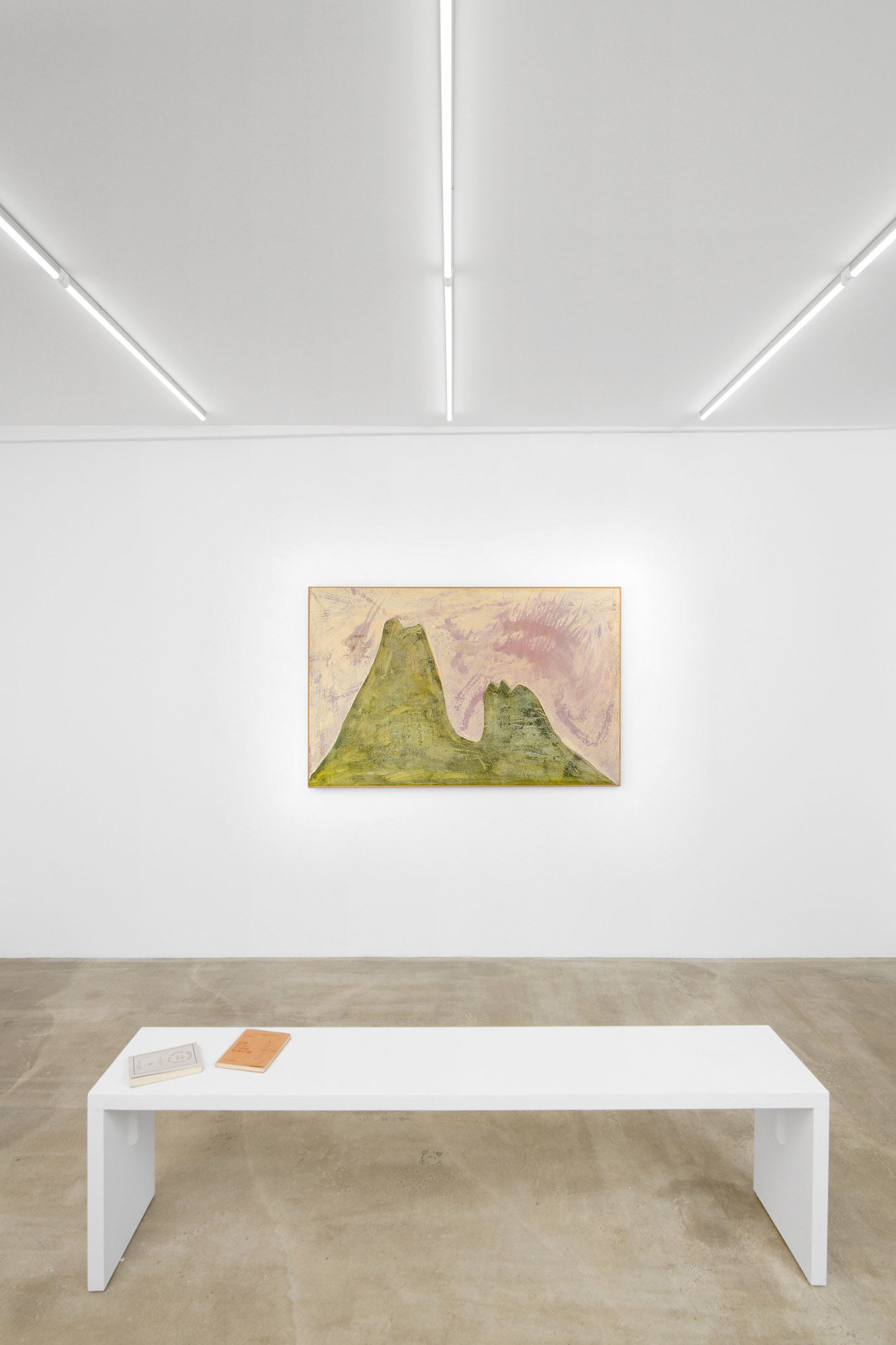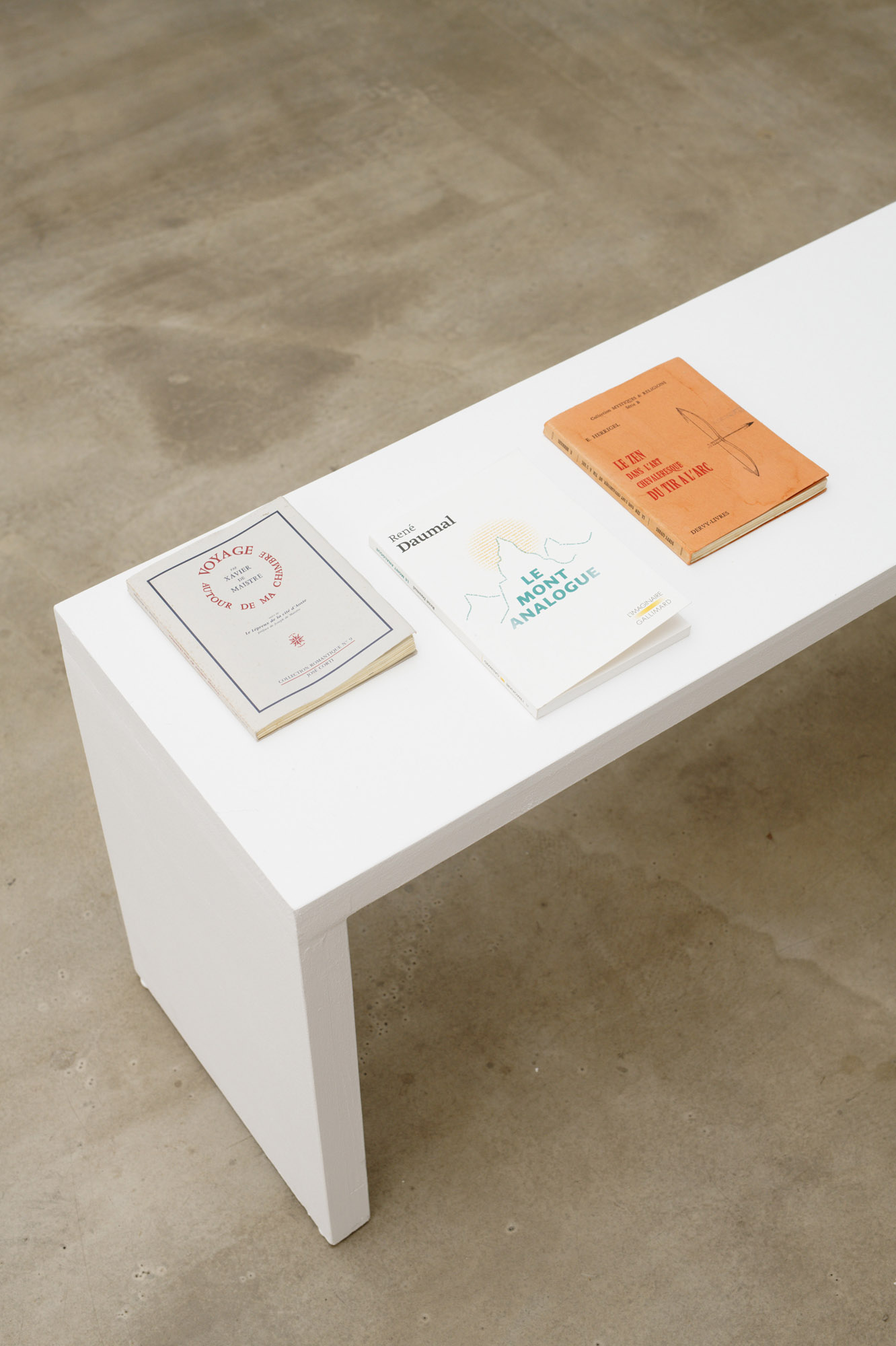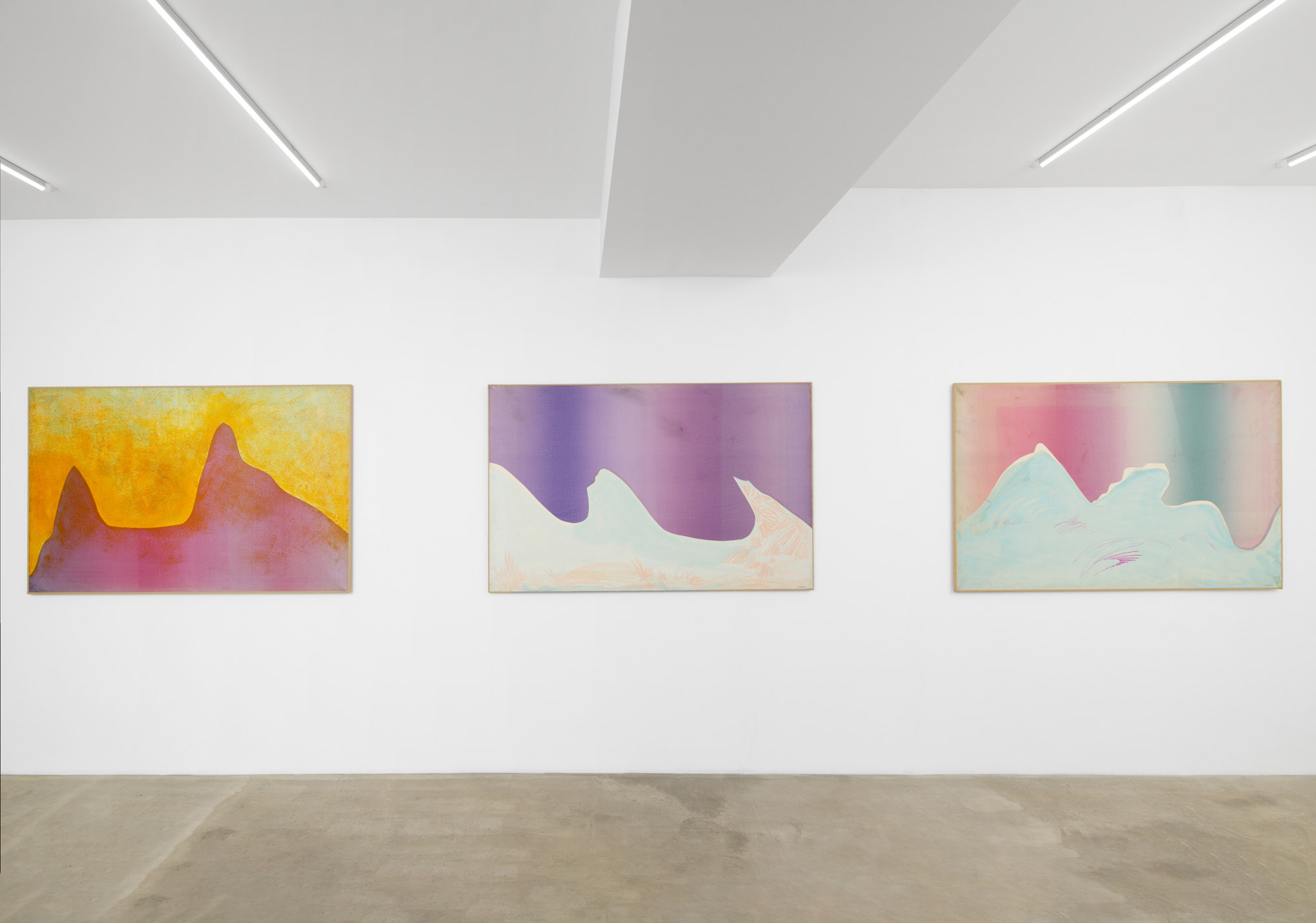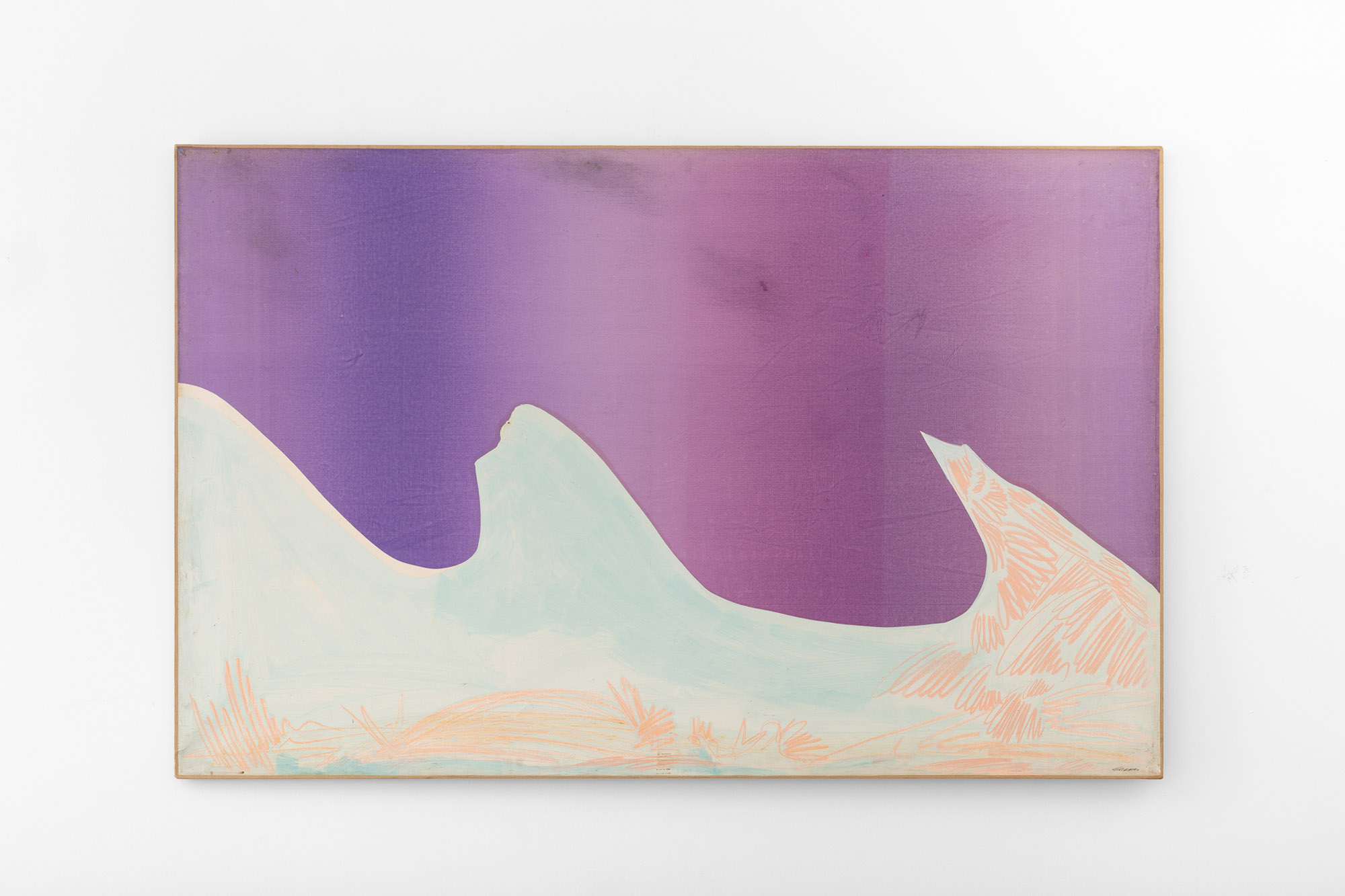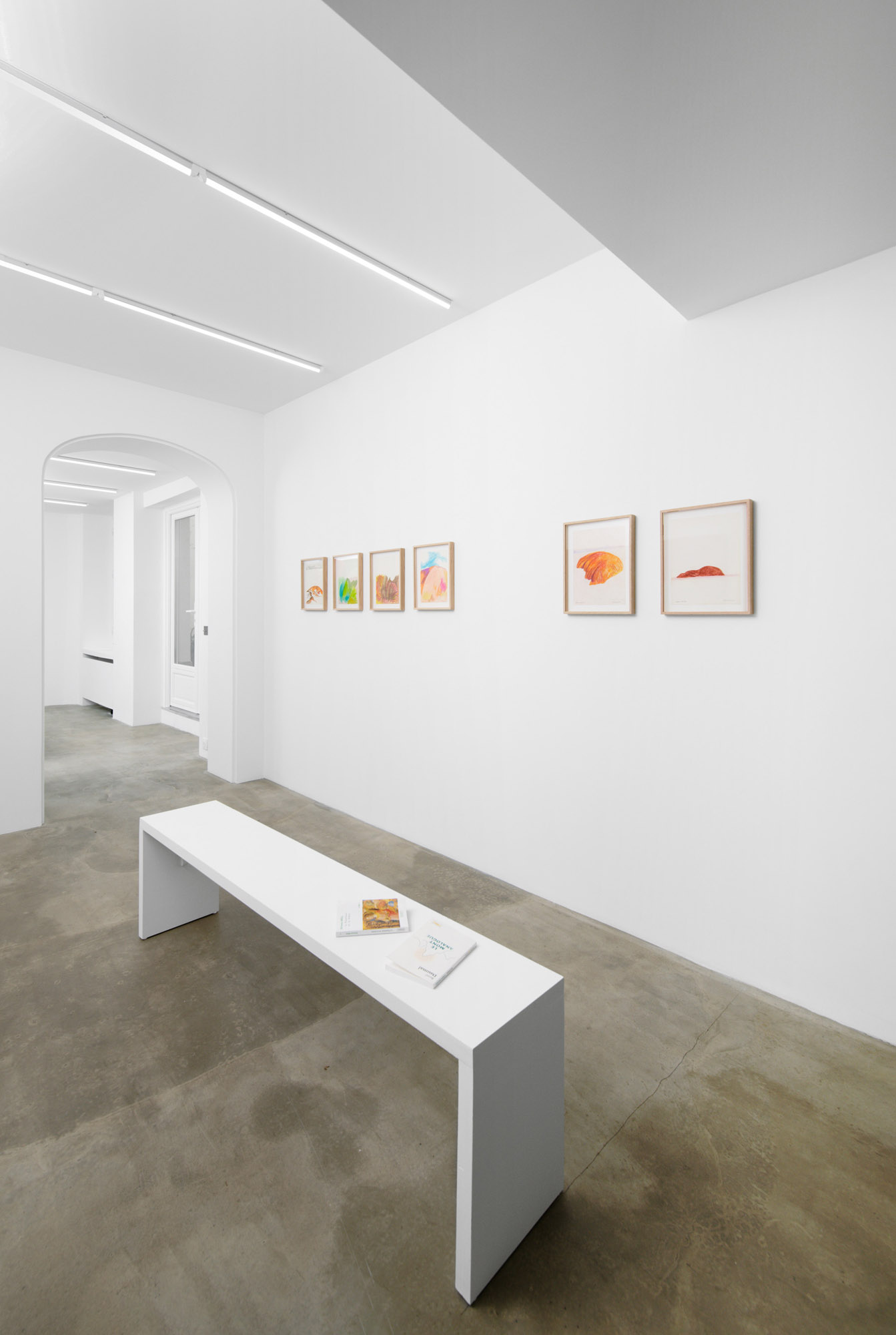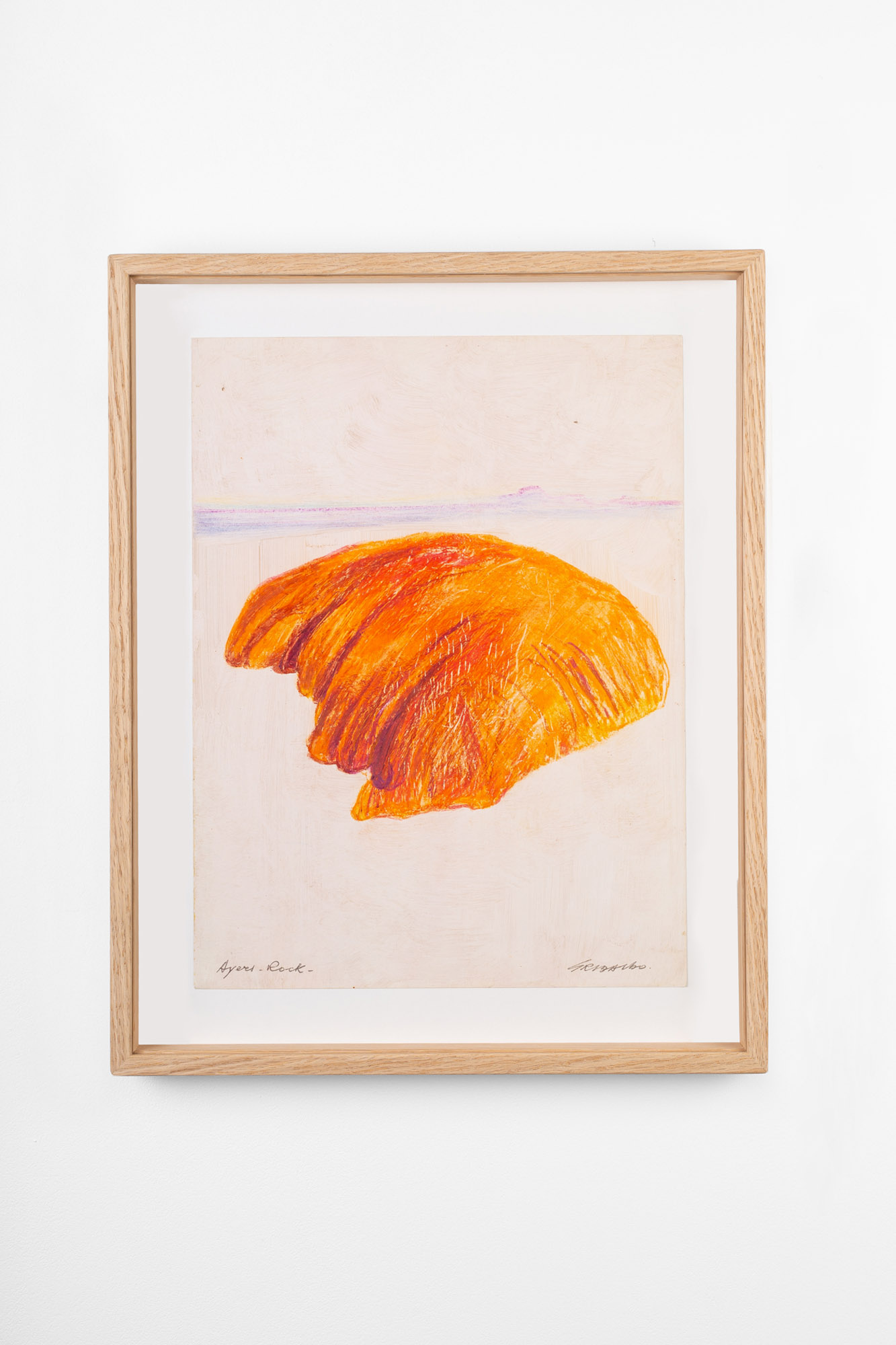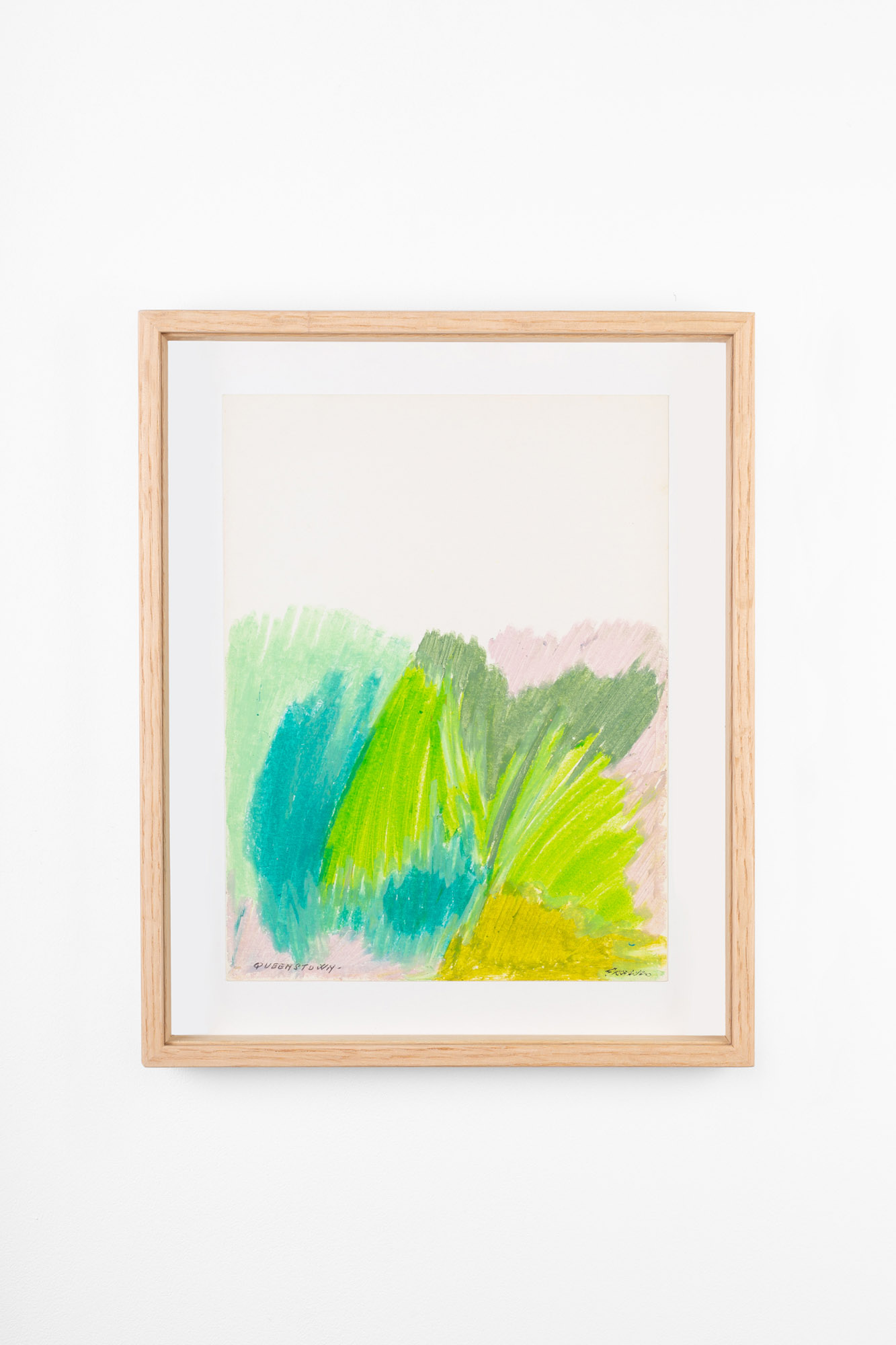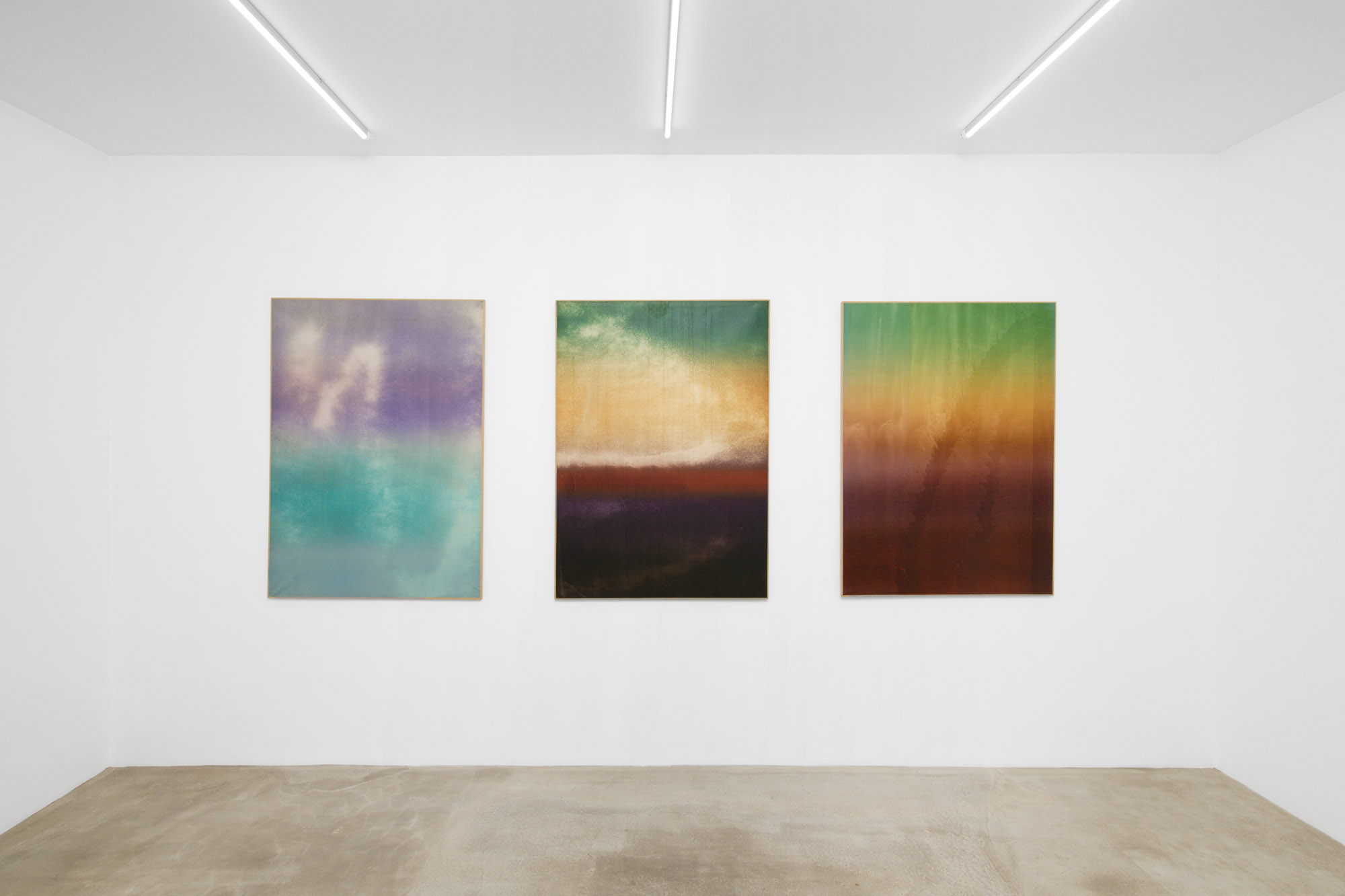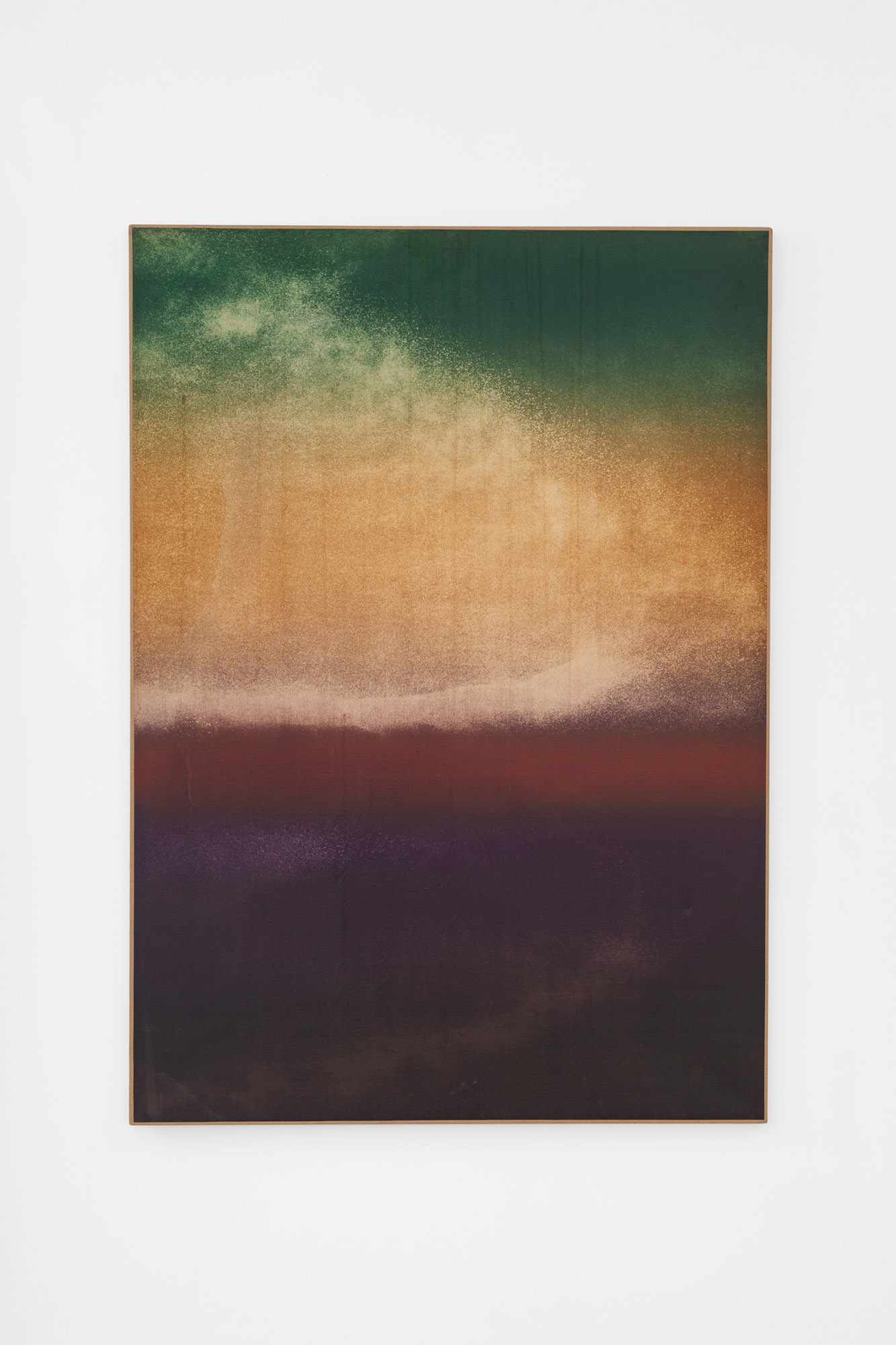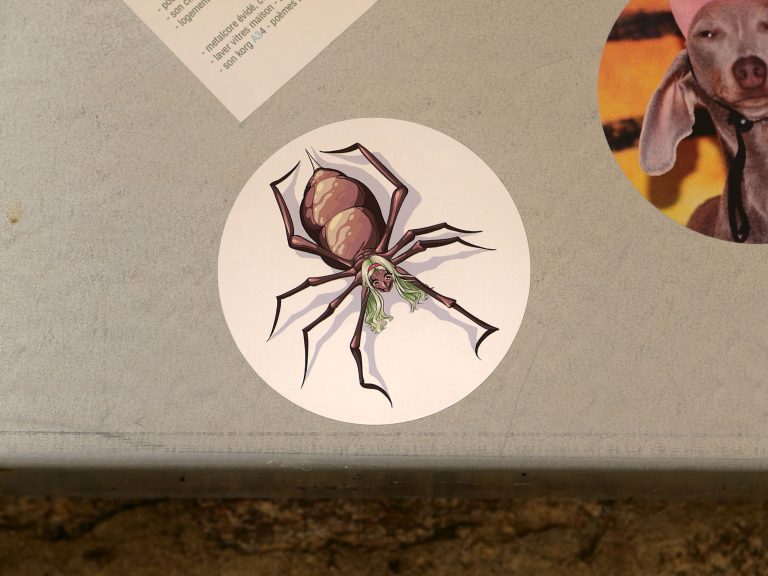Artist: Ezio Gribaudo
Exhibition title: Paysages, d’après la fin du monde
Venue: Sans titre, Paris, France
Date: February 22 – April 20, 2024
Photography: Aurélien Mole, Margot Montigny / all images copyright and courtesy of the artist and Sans titre, Paris
A Short Treatise on Contemplation of the Works of Ezio Gribaudo
Faced with Ezio’s inexhaustible creative act, a light upgrade is required. Yes, one must put oneself on his level, but from the inside. One must calm one’s sense of time – one’s pulse, almost. And in such away: allow oneself to see everything, listen to everything, swallow everything, as if Ezio knew how to do everything. Follow in his wake. Change – thanks to him – in size. Take on the dimensions of the universe.
Ezio had a thousand and one lives. He took action a thousand times. He knew all the faces. Hungry for travel, flouting borders, he traveled valleys, rivers, deserts, always aiming high: for the summits, the skies, everything that kisses infinity right on the mouth.
He brought back visions from his hunts. Dazzling intimacies, better than trophies. He whose existence went so fast, in such a full way, gave birth to lightning. Works like thunderclaps. With constantly evolving techniques – reflections of his devouring appetite, his endless curiosity.
Faced with his oeuvre, a question arises. How does one circumscribe the insatiable? How not to miss anything, and feel its full amplitude?
A solution arrives, unavoidably. To track down Ezio, we must slow down. Give ourselves time. Because Ezio will always outpace us in his gestures and reflexes. So, peacefully. Let’s find the languid tempo to respond to him, the great calm of observation. Even better: the tender, warm breath of contemplation.
Here’s how to do it. First, take the most natural pause in the world. Of a childish simplicity. Sitting, lying down, standing up, learning against a wall, against the heaters or the window, as far away or up close to the works. Exhaust the space of gallery. Sit there as you like. Make your nest. We put benches there on purpose. To make the landing easier. Establish yourself wholly. Curl up.
Once you’ve taken your place in front of the works, slowly, very slowly: open one eye. Then the other, without trying to look, as if waking up. When you’re rooted to the floor, start looking. See as if to feel, to feel better. See without limits. The colors, the movement of the hand, the constantly updated tactics, the trying. Everything that arises from Ezio. Of his insolent ability to always want to create and, ceaselessly, to start again. Everything that is born from his poetry.
We release ourselves. Like Ezio, to live in the torrent. Attach yourself to his movements, to his material. All is in letting-go, in spurts. There is something pacifying in this getting carried away. Like when you dive into the great calm of an ocean. We throw ourselves from a noisy ledge or an arid rock but after the shock, everything stops. Except our eyes which, while scanning the canvas again, accelerate, becoming a gaze. Imperceptible comings and goings and plural dance movements directly in the pupil itself. The gallery has disappeared. It became a piece of sky or mountain, a place still tirelessly crossed by Ezio’s footsteps. You can spend hours getting to know his paintings. You can even read a page between each gaze, rest, lie down again, relax completely, then right yourself again, and find your breath.
Like the beings who tour the globe without leaving their room, like the great surveyors of dreams, the mountaineers in search of absolute ascension, Ezio knows how to give from on high to those who, like him, give themselves to the world. To all one’s world.
To accompany contemplation, a list of books, available in the gallery, will facilitate the sweet reverie incited by the work’s of Ezio:
Mount Analogue, by René Daumal
Ka, by Roberto Calasso
Zen in the Art of Archery, by Eugen Herrigel
Gravity and Grace, by Simone Weil,
Reveries of a Solitary Walker, by Jean-Jacques Rousseau
A Journey Around My Room, by Xavier de Maistre
*
In the dazzling abundance of Ezio Gribaudo’s oeuvre, Cieli and Atlantes have a distinct, essential place.
The Cieli derive from his work as a publisher with a preponderant role in the art world of the second half of the 20th century. Using the typographic inks of industrial printing, Ezio discovered these sorts of celestial ready-mades, colored by accident – like the traces of an atmospheric gaze upon his poetic universe. The Cieli are proof of Ezio’s hybrid spirit, constantly open to new practices, influenced by his multiple activities and his inspiring encounters.
As for the Atlantes, they recall his taste for the beauty discovered during his numerous travels. One thinks of the summits of Morocco’s Atlas Mountains, which gave their name to the series, but also of the slopes of Australia and Hawaii, which he explored during the 1970s, and of the imaginary massifs of an Atlantis found by him alone. The instinctive gesture, as if in a notebook, prolongs the memory of the trip. And remember that for Ezio Gribaudo nothing matters more, even on the other side of the world, than the verb To Do.


